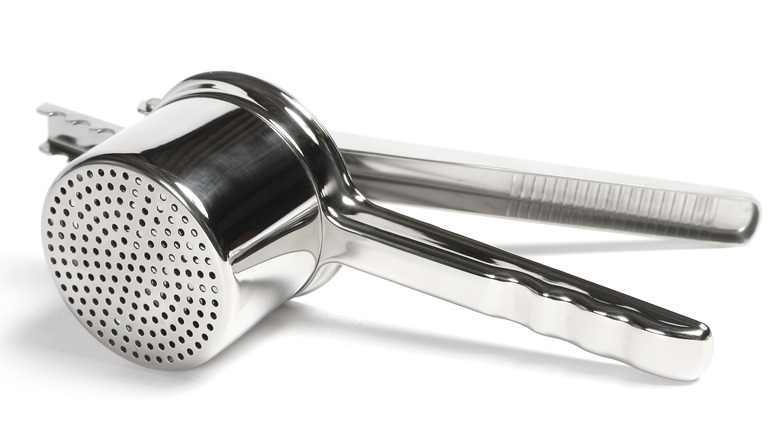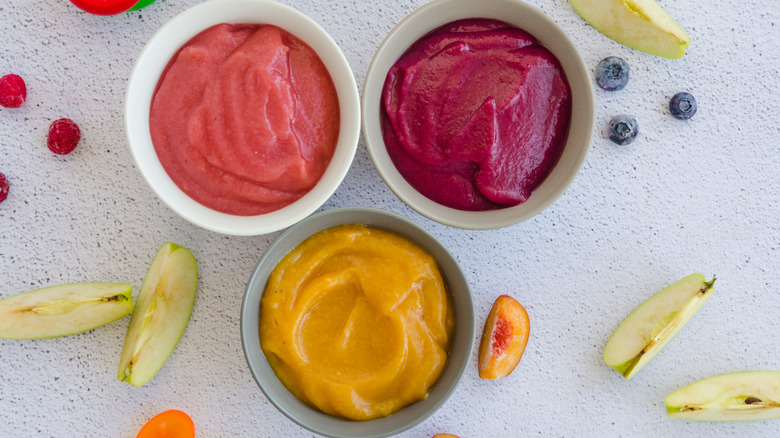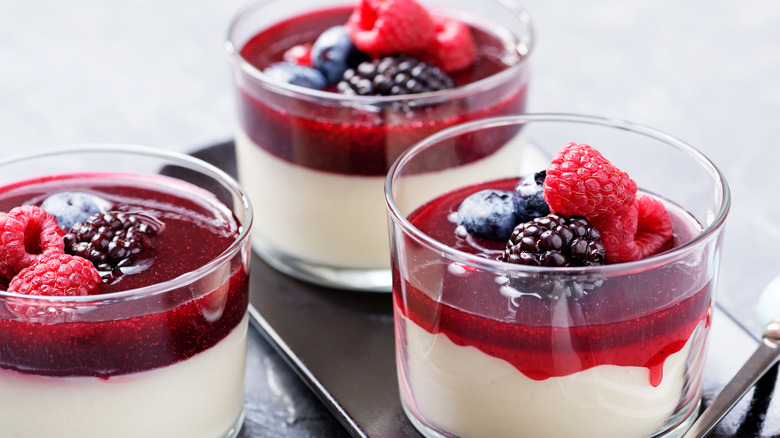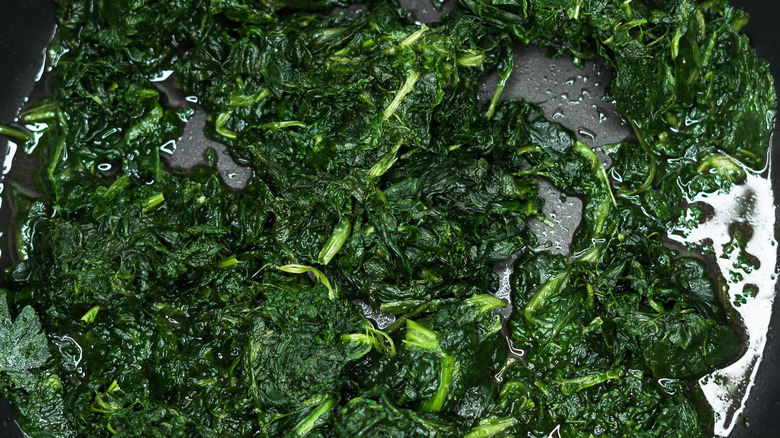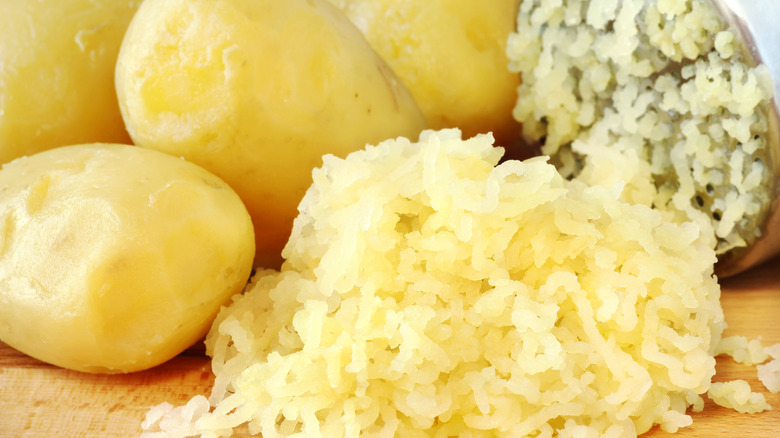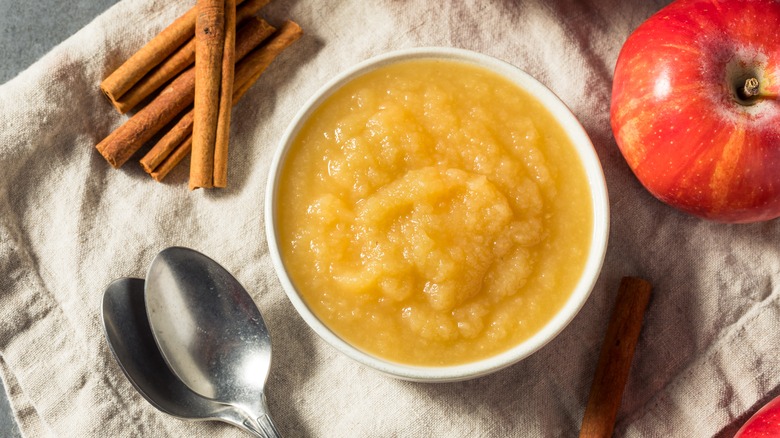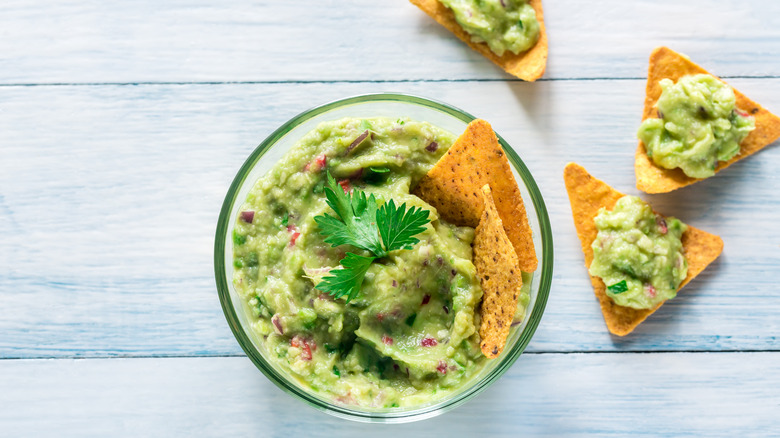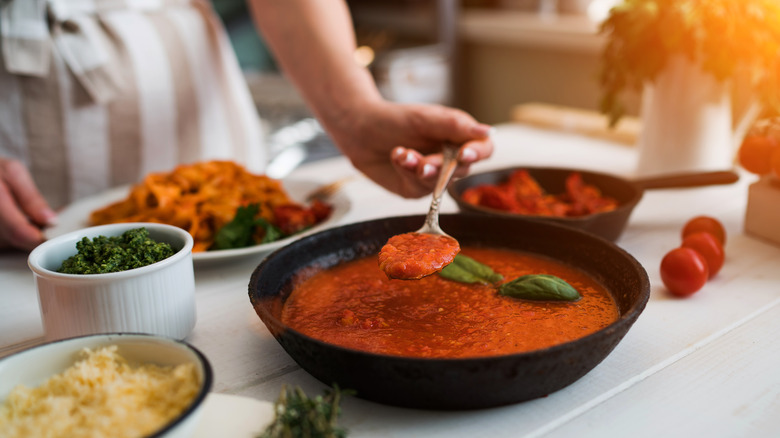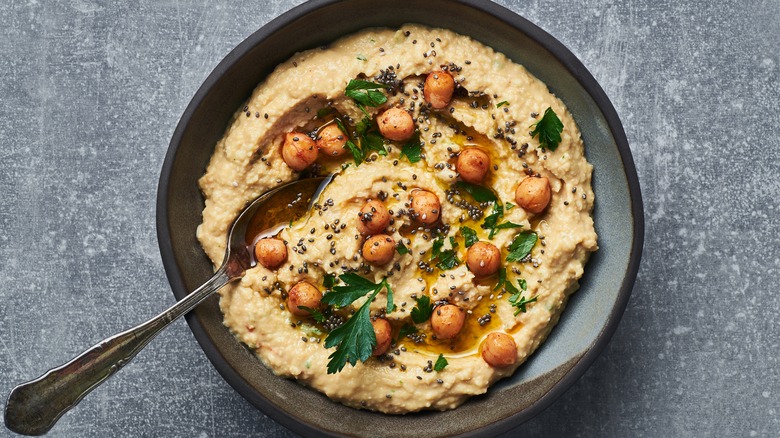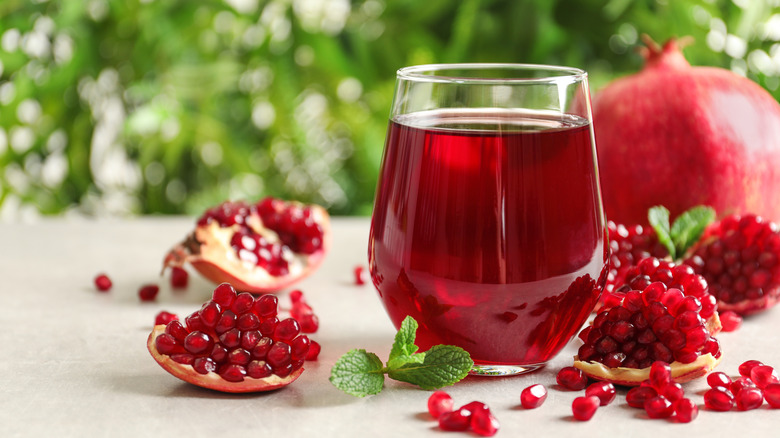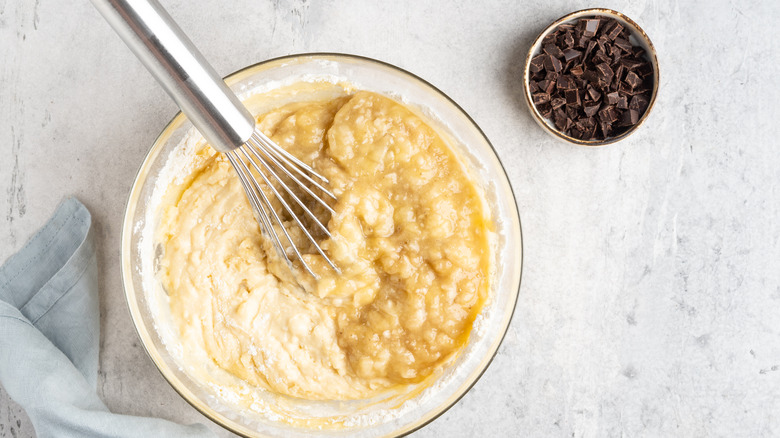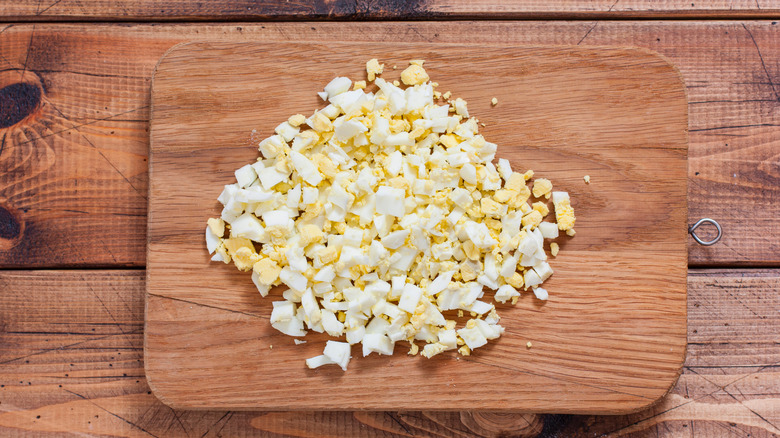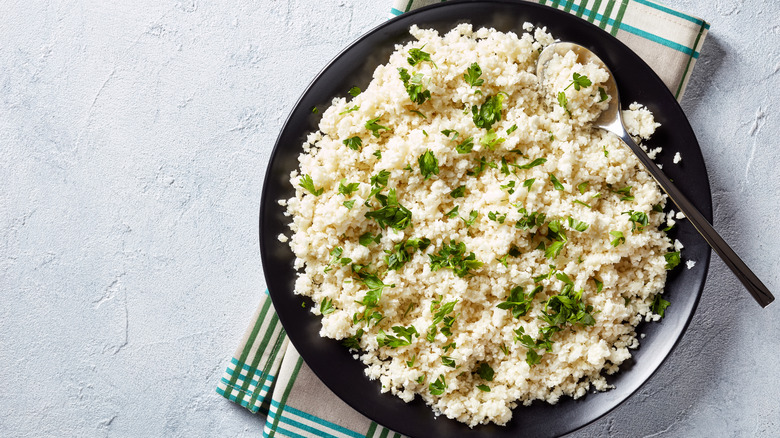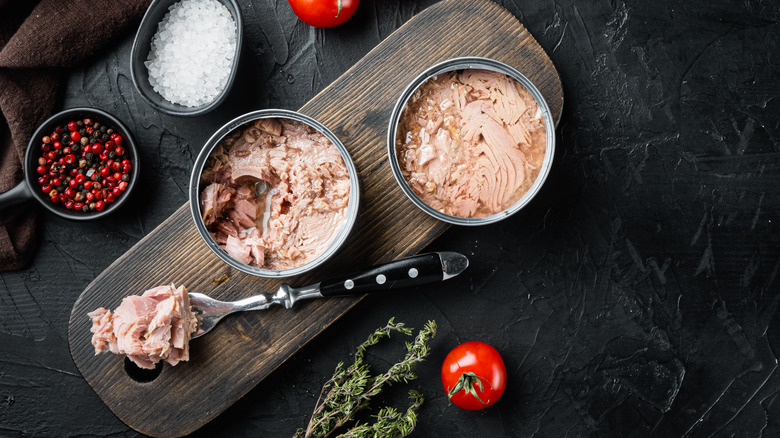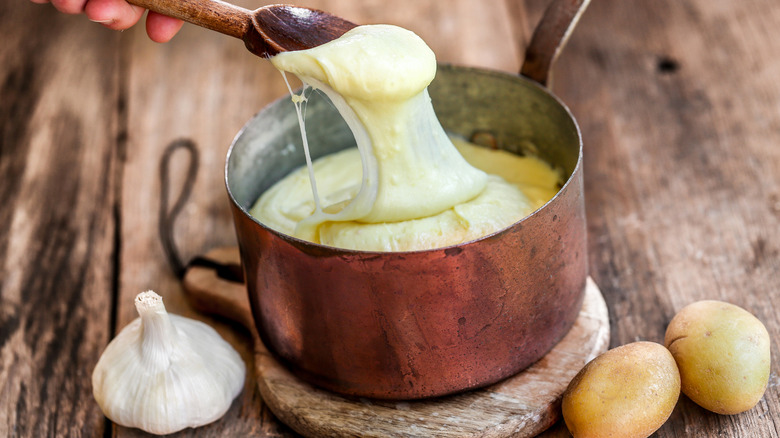The 15 Absolute Best Uses For A Potato Ricer
Whether you're a proud avid cook or just starting your cooking endeavors, learning about different kitchen tools can be helpful. Some devices might seem like they only have one use, so why would you want to spend the money on them? However, this certainly isn't the case for potato ricers. If you've never seen a potato ricer, it is built like an oversized garlic press. It has two handles you squeeze together, pressing the food and pushing it through the basket's holes. Many potato ricer discs can be switched out to have different-sized slots, which makes it a versatile kitchen utensil.
Potato ricers are commonly used for mashed potatoes; putting a cooked potato through the ricer will remove its skin and rice the potato. This will result in fluffy and light mashed potatoes. Although a potato ricer is fantastic for making mashed potatoes, there are so many other brilliant ways that you can use it. So, don't let this tool gather dust; Here are the cleverest ways that you can use a potato ricer, which will surely make your cooking experiences more enjoyable and save you time in the process.
Pressing soft foods to make baby food
Making homemade baby food has its pros and cons, no doubt. It can be rewarding while also feeling like a hassle at times. Luckily, if you have a food ricer, it can make the job a lot easier. One of the most common mistakes everyone makes when making homemade baby food is not puréeing the food enough, leaving chunky food that is a choking hazard. A potato ricer can help prevent this issue from ever occurring; Using the finest-sized slotted disc will guarantee that your baby's food is more than safe for them to eat, according to Williams Sonoma.
In addition, the ricer is fantastic because cooked fruits and veggies easily glide through the tiny holes. As a result, you can be confident that your homemade baby food will be free of choking hazards while providing your little one with a perfectly light and fluffy mash. The best part is that the potato ricer is easy to clean, saving you time in many ways.
Shaping noodles
One convenient thing about ricers is that they often have interchangeable discs. This feature is quite nifty because you can adjust the size to fit the needs of different foods you are making. One fantastic course of action you can take is using your potato ricer to make homemade noodles, two examples being spaetzle and passatelli. Spaetzle makers are so similar to potato ricers that you likely won't be able to tell the difference if you were to use the ricer instead. So, feel free to make dishes like this rye spaetzle recipe, which features asparagus, gruyere, and an easy-to-use application for your potato ricer.
As for the passatelli, perhaps you are unfamiliar with this pasta. In general, there are numerous types of pasta, and you should be using them all in different ways. Passatelli is a hearty pasta made with cheese and breadcrumbs, and it is perfect for times when you have leftovers on hand that you need to utilize. In this case, using the potato ricer can provide you with perfectly shaped passatelli pasta. This kitchen hack will undoubtedly leave you feeling impressed.
Making fruit coulis and sauces
One clever procedure that will put your potato ricer to good use is making fruit coulis or different fruit sauces. Weston Products, which makes a stainless-steel potato ricer, reports that the ricer will even take the skins off fruits like blueberries. From raspberries to strawberries, there are numerous types of fruits you can use for sauces. To do so, simply press the rinsed and trimmed fruits in the ricer to mash and juice them. Next, you can strain the mashed fruit from here to give it a smooth and saucy consistency.
If you want to turn the coulis into a reduced sauce by cooking it down on the stovetop, you have the freedom to do so. However, the raw fruit coulis will work in several scrumptious ways. For example, you could drizzle it atop an easy no-bake cheesecake recipe or another dessert to elevate its appearance. Additionally, you can incorporate it into beverages. For instance, mixing fruit coulis into a classic mimosa is a sure way to jazz it up and make it unique. The possibilities are absolutely endless, and using the potato ricer will save you a lot of trouble.
Draining spinach
Here is a clever trick that will surely save you time and trouble. You can use a potato ricer to drain spinach effectively. When working with spinach, many recipes will call for draining it because the excess water could affect the overall consistency of the dish if you don't remove it. In fact, not squeezing out the water is one of the common mistakes everyone makes while cooking spinach. To use a potato ricer for draining spinach, place the spinach in the ricer and hold it over a container or bowl. Then, press the spinach gently, allowing the excess water to fall into the container.
It is ultra-convenient to use the ricer because you don't have to worry about touching the spinach directly with your hands or dirtying any linens in the process. You can use the drained spinach in recipes and be confident that it won't water down your dish. This hack makes drying spinach easy and effective, so what's not to love?
Grating potatoes for gnocchi
If you're a fan of gnocchi, you will surely want to try making it with a potato ricer instead of a potato masher. Although a masher can get the job done, a ricer has several benefits. First, it makes the gnocchi stay nice and fluffy; second, it will ensure that the dough is lump free and smooth. Part of the untold truth of gnocchi is that it isn't actually a pasta like some might assume, but it is considered more of a dumpling.
To keep these dumplings from being dense or clammy, use the right ingredients in your potato gnocchi recipes. Additionally, ensure to fully mash the potatoes (this is where the potato ricer comes in). The greatest part is that you don't have to take time to peel the potatoes because the ricer will separate the skins as well as rice the potato. Try this trick next time you make gnocchi; it will certainly leave you with cloud-like dumplings.
Peeling and mashing apples for applesauce
Have you ever thought about using your potato ricer to make applesauce? This hack is the secret to making homemade applesauce quickly and efficiently. Of course, you can always buy store-bought applesauce, but it just isn't the same as the flavor of homemade. As with potatoes, pressing apples through the ricer will remove the skin while simultaneously mashing the apples. When using the ricer for your homemade applesauce, make sure that you cook the apples beforehand. Otherwise, it will undoubtedly be a battle to press it through.
Another benefit of using the ricer is that it will also remove the seeds in the process. So, instead of taking the time to remove the seeds, peel the skin, and chop the apples, the ricer is a tool that can get all of those jobs done in one go. With this handy trick, you can have homemade applesauce done in approximately half an hour, believe it or not.
Mashing avocados for guacamole
Everyone has their ideal consistency for making homemade guacamole, some like the dip chunky, while others like it on the smoother side. A potato ricer can be a handy tool for those who enjoy their guac on the creamier side. Placing the avocado through the ricer will save you the trouble of mashing the avocado. This practice can be the ultimate lifesaver if you make a large batch of guacamole for a party. Of course, you can use it if you are making a serving or two, but when it comes to cooking for crowds, it will be even more convenient.
Kitchen Warehouse states when you pass food through the ricer, it produces mash that is light in texture, rather than over-mashing it. Of course, this goes for potatoes, but it also goes for avocados and other foods. So, next time you think about making homemade guacamole, pull out the handy potato ricer and give it a go. Undoubtedly, your guacamole will turn out creamy and have a fantastic texture.
Peeling tomatoes for tomato sauce
If you are someone who enjoys making homemade tomato sauce rather than buying it, you will certainly approve of this next hack: using a potato ricer to crush the tomatoes and peel them. Although it may seem too good to be true, you'd better believe it. Once your tomatoes are roasted, you can transfer them to your potato ricer. First, hold the ricer over a bowl or container that will fit all of the tomatoes. Then, in batches, gently use the tool to pass the tomatoes through effectively, generously crushing them in the process (via Great British Chefs).
In doing so, the ricer will separate the tomato from its skin. From there, you can use the tomato mash as a base for your sauce, and you won't have to worry about the skin being in the way; This is a quick and efficient method to get the job done, and it will be even more suitable when you cook for a large group of people.
Mashing chickpeas for hummus
There is nothing quite like flavorful hummus that you can use as a dip or smother on a sandwich. It is surely trouble-free to pick up a batch of pre-made hummus at the store, but it doesn't compare to homemade hummus made with love. When planning to make it homemade, you will likely want to remove the skins from the chickpeas so the hummus can turn out creamier.
Did you know that you can do so by using your potato ricer? Chef and cookbook author David Rosengarten gives this genius advice in his cookbook titled "It's All American Food." According to Rosengarten, pressing the chickpeas with the food ricer not only mashes them to a lovely consistency for hummus but also removes the skins in the process (talk about killing two birds with one stone). There is no denying that this hack is a time-saver like no other; pressing the chickpeas through the ricer guarantees a silky hummus free of lumps.
Making pomegranate juice
Just as with many other types of homemade juice, pomegranate juice bursts with flavor. However, the thought of juicing pomegranate seeds might be intimidating compared to juicing fruit like an orange. The good news is that the process would be quite effortless if you used a potato ricer. According to Blue Flame Kitchen, you can do this by placing pomegranate seeds into your ricer and gently squeezing the seeds. This action will draw out the juice, leaving you with a pleasantly sweet and tart liquid that has a vibrant appearance.
From here, you can enjoy the juice as-is or even make pomegranate molasses out of it. For those wondering what pomegranate molasses is and what dishes it is best in, you will be amazed to find out just how versatile it is. Pomegranate molasses is not actually molasses but a pomegranate juice that has been reduced to a syrupy consistency. You can utilize it in an assortment of dishes, like bean stews, glazed meats, hummus (and other dips), or cocktails and desserts. So, don't be hesitant; you can use your potato ricer to make pomegranate juice effortlessly and then allow your creative side to take over.
Mashing bananas for banana bread
If you have set out on a journey to make some homemade banana bread but don't have a masher for the bananas, don't worry. The good news is that using a potato ricer can save the day in an instant. Of course, you can always use a fork to mash them, but using a ricer is much less manual labor. It is important to avoid making the batter with banana chunks still intact because it can affect the texture of the bread. In fact, putting whole large banana pieces into the batter without mashing them is one of the common mistakes everyone makes with banana bread.
Using a potato ricer will ensure that the banana bits are small so that you will spread the banana flavor throughout the batter evenly. Bustle states that using potato ricers with interchangeable discs will do the best job by using the disc with larger slots. However, any standard ricer disc will still work in mashing the bananas.
Crushing hard-boiled eggs
Egg salad is undoubtedly delightful, whether you like smothering it onto a croissant sandwich or using it as a side dish for your favorite barbecue foods. The only downfall to making egg salad, especially in large quantities, is how tedious it can be when chopping the eggs. Fortunately, using a potato ricer to get the job done can save you significant time. OXO, which makes the 3-in-1 adjustable potato ricer, reports that you can pass hard-boiled eggs through the ricer. Not only that, but the eggs can be whole when doing so; This means that once you successfully hard-boil the eggs, there is no chopping needed because the ricer does all the work for you.
So now, you can be on your way to bringing creamy egg salad recipes to life, and the only chopping needed will be for ingredients like parsley or chives. This method might just become your new favorite way to use your handy potato ricer.
Making cauliflower rice
Cauliflower rice receives all the buzz, and for a good reason. It is light, has a pleasant texture, and you can dress it up in many ways. Buying it at the store can be convenient because it is ready to go, but have you ever thought about making your own? Using your potato ricer, you can create cauliflower rice with minimal effort. The practice is simple, according to WebstaurantStore; Simply prep your cauliflower as you usually would, trimming the stems and cutting it down into more even pieces. Make sure to cut it enough that the cauliflower chunks will easily fit in your potato ricer. Then, working in batches, you can pass the vegetable through the ricer to create the ultimate cauliflower rice.
From here, you can incorporate cauliflower rice into dishes like this cauliflower rice risotto recipe. Not only will it taste phenomenal, but it will have a level of freshness that store-bought cauliflower rice just can't provide. Once trying out your ricer on your cauliflower, you may never want to go back to buying pre-made again.
Draining canned tuna
When working with canned tuna, it's a good idea to drain it first. Whether you keep water-packed or oil-packed tuna, a potato ricer will be your new best friend. The action of draining canned tuna might be new to some, but it is a wise practice indeed. In some instances, keeping the oil in oil-packed tuna can be beneficial for the dish, so you can use your best judgment depending on what you are making. On the other hand, it is a good idea to drain water-packed tuna every time. Otherwise, it can give a soupy texture to dishes that shouldn't be soupy at all, which is why you should fully drain the tuna can for tuna salad.
To get the job done, you only need a potato ricer and a bowl. Cuisine At Home states to transfer the canned tuna to the ricer and gently press it down so that all excess liquid falls into the bowl below. Could it get any easier than that?
Grating potatoes for aligot
Aligot is certainly a dream-like dish, especially for those who are cheese fanatics. With its cheesy texture and rich flavor, there is so much to love; when you use a potato ricer in the cooking process, it becomes even more wonderful because of how effortless it is to make. However, those who have never had it might wonder what aligot is and what it tastes like. In simple terms, aligot is cheese-infused mashed potatoes, typically made with Tomme cheese, but sometimes other kinds of cheese like mozzarella.
When looking at aligot recipes, cream, garlic, and seasonings are also usually involved. In order to make the best aligot you can imagine, using a potato ricer is the way to go. Once you've cooked the potatoes, pass them through the ricer before incorporating them with the other ingredients; This will ensure that the aligot is lump-free and can become perfectly ooey-gooey, which will catch the eyes of many.
